How do EV charging stations work – EVSE Experiences 01

Preface
How do EV charging stations work
With electricity as the core, supported by intelligent operation and safety systems, power is extracted from the power source and delivered to the car’s battery.

Power System
The power system of an EV charging station is a crucial component that ensures the normal operation of the charging equipment, involving obtaining electrical energy from the grid and converting it into a form suitable for charging electric vehicles (solar energy storage solutions are not listed here). The following are the main components and working principles of the power system in an electric vehicle charging station.
a. Connect to the power supply
Charging stations typically require a connection to the local power company or electrical grid in order to access a stable power supply. This process may involve negotiating agreements for power access, complying with regulations set by the power company, and ensuring that the charging station has sufficient capacity to meet the demand of multiple electric vehicles charging simultaneously.
b. Substations and transformers
Power companies typically provide substations for transmitting high-voltage electricity from the grid to charging stations. Near the charging stations, transformers may also be used to lower the high-voltage electricity to a suitable operating voltage for charging equipment.
c. Electric energy conversion
Power systems of EV charging stations typically include various energy conversion devices, such as inverters, which are capable of converting alternating current (AC) to direct current (DC) in order to better meet the charging requirements of EV’s batteries.
d. Charging device power supply
Inverters convert electrical energy into direct current (DC) suitable for charging devices and then supply it to the charging stations, which require DC with different voltage and current levels depending on the type of charger (slow chargers or fast chargers).
e. Power management and distribution
The power system may also include a power management system, which is used for monitoring and managing the distribution of electricity within the charging station. This ensures that the charging station can efficiently allocate electrical energy according to demand, avoiding overload and optimizing charging efficiency
f. Electricity metering
To facilitate user billing and reporting, energy metering devices are typically incorporated into power systems to measure the amount of electrical energy supplied by charging stations to electric vehicles.
g. Smart grid interaction
Some advanced power systems can interact with smart grids to achieve more intelligent and flexible electricity management. This interaction can be facilitated through communication technologies, such as internet connectivity or dedicated communication protocols.
h. Backup power supply
To facilitate user billing and reporting, energy metering devices are typically incorporated into power systems to measure the amount of electrical energy supplied by charging stations to electric vehicles.

EV Charging System
The EV charging system of electric vehicle charging stations is the most direct component that interacts with users and EVs at the charging station. This system comprises of chargers, connecting devices, communication systems, and user interfaces. The following provides a detailed introduction to the charging system of stations.
a. Chargers type
Chargers for EVs can be classified into slow charging stations (Level 1 and Level 2) and fast charging stations (DC fast charging), based on their charging speed and power. Slow charging stations are suitable for residential, commercial, and office locations, while fast charging stations are typically used in public charging stations to provide quicker recharging for electric vehicles.”
b. Plugs and connecting devices
Charging stations are equipped with plugs and connectors that are suitable for different models of electric vehicles. These plugs typically comply with international or regional standards, ensuring compatibility with various brands and models of electric cars.
c. Cable management system
Charging stations typically include a cable management system, which serves two purposes. Firstly, it allows for the storage of cables on the charger itself, reducing clutter and improving the user-friendliness of the charging station while minimizing cable wear and tear. Secondly, it provides storage for spare cables, emphasizing the importance of suitable storage conditions and anti-theft measures.
d. Inverter and power conversion
Inside a charging station, there is typically an inverter that converts the direct current (DC) from the power supply system into alternating current (AC), which is suitable for charging electric vehicles.
e. Communication module
The charging pile is equipped with a communication module that connects to the internet for communication with the charging station management system, enabling operators to monitor the status of the charging pile in real-time, remotely manage it, and perform user billing.
f. Man-machine interface
Charging stations typically feature a user interface that facilitates interaction between users and the charging station. This can be achieved through an LCD screen, touchscreen, buttons, or other interactive devices, enabling users to initiate and stop charging, select charging modes, and view charging status.
g. Safety system
The charging system includes safety features such as overcurrent protection, overtemperature protection, and leakage protection. Ground-installed DC chargers are even equipped with liquid level detectors to prevent the charger from being submerged in water and causing damage to internal components, ensuring a safe and reliable charging process.
h. Payment and identity authentication systems
Charging station systems are typically integrated with user authentication and payment systems, allowing users to authenticate their identity and make payments through methods such as mobile applications, RFID cards, or membership cards.
i. Data recording and reporting
The charging station system can record key data during the charging process, such as duration and amount of charge, and generate reports for users to view or for operators to monitor and analyze.

Intelligent Operation Background
The intelligent backend of an electric vehicle charging station is the central control and management part of the entire charging system. Through the intelligent backend, remote monitoring, operational management, data analysis, and user services can be achieved for the charging station. The following is a detailed introduction to the intelligent backend of an EV charging station.
a. Remote monitoring
The intelligent backend allows operators or system administrators to remotely monitor charging stations via the Internet, enabling them to check the status of the chargers, current and voltage conditions, availability of the charging station, and receive fault reports.
b. Operations management
The intelligent backend offers a variety of tools to manage the operation of charging stations, including setting opening and closing times for charging piles, configuring charging rates, adjusting charging periods, and more.
c. User management
The intelligent backend enables operators to manage users, including user registration, identity verification, and payment information management. Operators can access users’ charging history, feedback, and other information.
d. Data analysis
The intelligent backend can analyze the operational data of charging stations, generate reports to help operators understand the usage, power demand, and user behavior of the charging stations. This helps in formulating better operational strategies and optimizing the layout of charging stations.
e. Remote firmware update
The intelligent backend of the charging station enables remote firmware updates to ensure that the charging piles and other devices have the latest software versions, thereby enhancing system security and performance.
f. Payment and settlement
The intelligent backend management handles the process of fee settlement and payment, capable of generating detailed settlement information based on charging data, supporting various payment methods, and ensuring transaction security.
g.Smart Grid interaction
Advanced smart backend systems can interact with the smart grid, dynamically adjusting charging strategies based on information such as grid load and electricity prices. This achieves a more intelligent and flexible management of the grid.
h. User Services and notifications
The intelligent backend is responsible for managing user services, including providing real-time notifications to users upon charging completion, handling user feedback, and offering user support. This can be achieved through mobile applications, text messages, emails, and other communication methods.

Safety System
The safety system of electric vehicle charging stations comprises a series of measures and devices designed to ensure the safety of users, equipment, and the charging station itself during the charging process. These safety systems encompass various aspects, including physical security, electrical safety, data security, etc. The following is a detailed introduction to the safety system of electric vehicle charging stations.
a. Fire and extinguishing systems
– Fire monitoring: The safety system may include fire monitoring devices to detect potential sources of fire, such as cable or equipment failures.
– Fire suppression system: Some charging stations are equipped with fire suppression systems that can quickly take action in the event of a fire, such as using extinguishers or automatic fire suppression systems.
b. Physical security
– Surveillance cameras are typically included in security systems to monitor activities around the charging station and ensure its physical security.
– Access control measures, such as access control systems, card swiping, fingerprint recognition, etc., are implemented to ensure that only authorized personnel can enter the charging station area.
c. Data privacy and cybersecurity
– Data encryption: Encryption technology is used in the data transmission between the charging station and the intelligent backend system to protect user data privacy.
– Network security: The system should have network security measures, including firewalls and antivirus software, to prevent network attacks and data leaks.
d. Emergency shutdown and alarm systems
– Emergency shutdown button: An emergency shutdown button is available for both users and staff to quickly interrupt the charging process in case of emergencies.
– Alarm system: The charging station is equipped with an alarm system that automatically triggers alerts and notifies relevant personnel to respond to unforeseen events.
e. User education and safety tips
– User education: Provide user education to ensure that users understand safe operations during the charging process and emergency response measures.
– Safety reminders: Install safety reminders at the charging station to remind users of precautions, such as not leaving their vehicle unattended during the charging process and avoiding exposure to rain.

Summary of how do EV charging stations work
In summary, EV charging stations function as the infrastructure to supply electrical power to electric vehicles, employing authentication, communication, and power delivery mechanisms to facilitate the charging process. Users can access these stations, charge their vehicles, and make payments through secure and user-friendly systems.


0 Comments